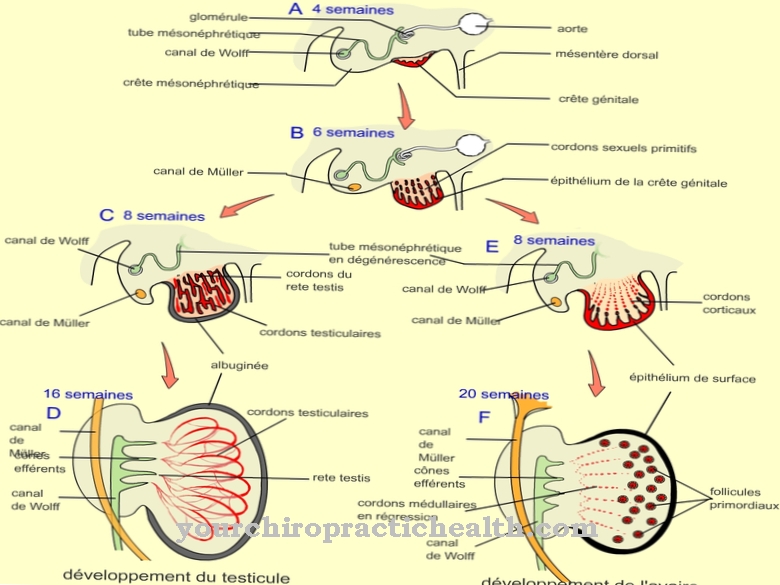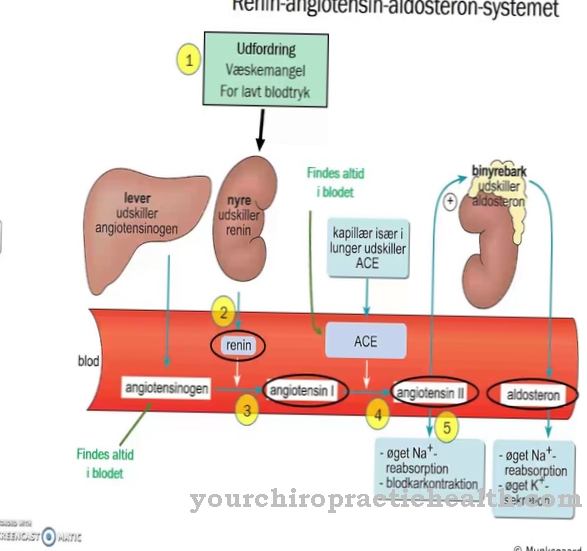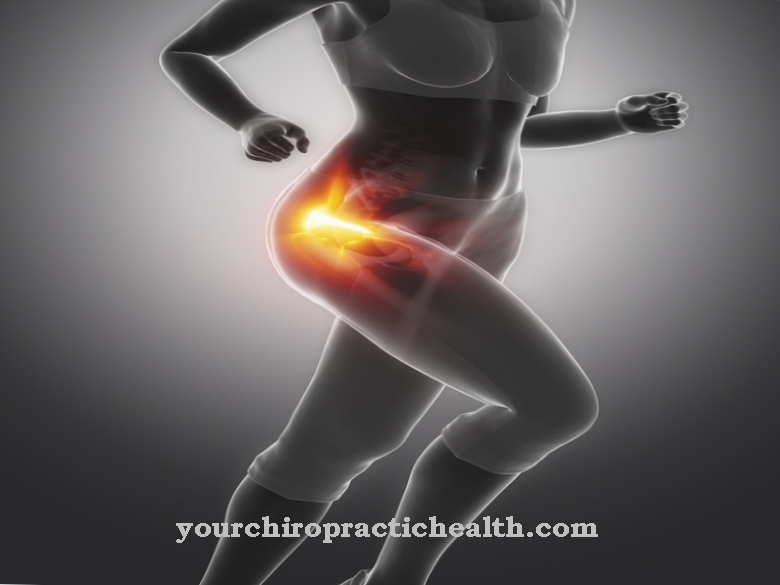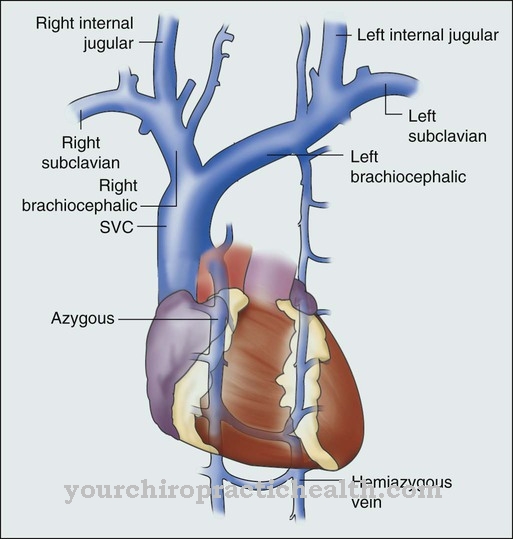The Neurohypophysis Like the adenohypophysis, it is part of the pituitary gland (pituitary gland). However, it is not a gland itself, but a part of the brain. Their job is to store and provide two important hormones.
What is the neurohypophysis?
The neurohypophysis (posterior lobe of the pituitary gland) is the smaller part of the pituitary gland alongside the adenohypophysis (anterior pituitary gland). In contrast to the adenohypophysis, however, the neurohypophysis is not a gland. She can't make hormones. But it does the job of storing two important hormones, ADH and oxytocin.
Historically, it is part of the brain. During pregnancy it develops from a protuberance in the diencephalon. The adenohypophysis, on the other hand, emerges from a bulge in the oral cavity and becomes an endocrine gland. Despite their different origins and functions, both organs merge into one functional unit in the form of the pituitary gland.
As the posterior lobe of the pituitary gland, the neurohypophysis represents the posterior part of the pituitary gland. However, this only affects humans. In other mammals, such as predators or horses, it is completely enclosed by the adenohypophysis. Therefore, the term posterior pituitary cannot be generalized in relation to the neurohypophysis.
Anatomy & structure
The neurohypophysis is composed of the infundibulum (pituitary stalk) and the lobus nervosus. The pituitary stalk is connected to the median eminentia. The eminentia mediana is a neurohemal organ that releases neuropeptides formed by neurons into the blood. The neuropeptides reach the adenohypophysis via the pituitary-portal vein system and function here as releasing or inhibiting hormones. Thus, the Eminentia mediana represents an important interface between the nervous and hormonal systems.
The nervous lobe is the posterior part of the neurohypophysis. The effector hormones oxytocin and ADH, which are formed in the hypothalamus, are stored there. The storage of these hormones is guaranteed by their binding to certain carrier proteins (neurophysins). Certain specialized cells of the neurohypophysis, the pituitarytes, can, if necessary, cause the proteolytic cleavage of the hormones from the carrier proteins and their release into the bloodstream.
Function & tasks
The neurohypophysis has the task of storing the hormones vasopressin (ADH) and oxytocin and releasing them when necessary. The two hormones are first bound to so-called neurophysins and pass through axons (nerve cell processes) from the hypothalamus to the posterior lobe of the pituitary gland. As the interface between the nervous and hormonal systems, the neurohypophysis determines the body's need for these hormones and, on this basis, initiates their release. Vasopressin, also called antidiuretic hormone, regulates the body's water balance.
It prevents too much water from being expelled from the body in the urine. If the body is insufficiently supplied with water or if there is too much fluid loss, the blood is thickened. The amount of blood decreases and the blood pressure drops. These changes are registered in the hypothalamus by certain nerve cells, with the result that the production of vasopressin increases. This increased formation of vasopressin is in turn the signal for the neurohypophysis to release the hormone from its storage. The vasopressin then restricts the further excretion of fluid.
The other hormone, oxytocin, performs several functions in the body.It is responsible for triggering labor and providing milk to the breast while breastfeeding. It also has a stimulating effect during sexual intercourse. The release of oxytocin by the neurohypophysis is triggered by various stimuli, such as childbirth, the sucking reflex during breastfeeding or sexual intercourse.
Diseases
Neurohypophysis disorders mainly affect the dysregulation of vasopressin production and release. In connection with oxytocin, pathological processes are very rare. The posterior lobe of the pituitary gland can be affected by various benign or malignant disorders that affect the production or storage of hormones. A lack of vasopressin triggers what is known as diabetes insipidus. Very large amounts of urine are excreted here. The body loses a lot of water and there is a severe feeling of thirst due to its dehydration (desiccosis).
In extreme cases, there is a loss of fluid up to 20 liters per day. The severe feeling of thirst causes the person to drink very large amounts of fluids. However, this cannot prevent dehydration because the liquid drunk is immediately excreted. Other symptoms of diabetes insipidus include tiredness, dry skin, and very low blood pressure. The constant loss of water also increases the sodium concentration in the blood. This leads to confusion, seizures or coma. The vasopressin deficiency can have various causes. The production and storage of vasopressin may be disrupted by tumors or cysts in the hypothalamus or in the neurohypophysis. The tissue of the hypothalamus or the posterior lobe of the pituitary gland can also be damaged by inflammatory processes caused by meningitis or tuberculosis.
Operations, radiation treatments, heart attacks or bleeding can also affect both organs. The same applies to an accident with a traumatic brain injury. The hypothalamus or the neurohypophysis is also very often damaged by so-called autoimmune reactions. The immune system attacks the tissue of these organs. In rare cases, too much vasopressin (ADH) is formed. This particularly affects premature babies who are ventilated. It also occurs in bronchial carcinoma. A lot of water is retained in the body and the sodium concentration drops. Recent research also suggests that vasopressin could have antidiuretic properties as well as an influence on the psyche. Thus, there is a likelihood that disorders of the neurohypophysis also have psychological effects.
























.jpg)



